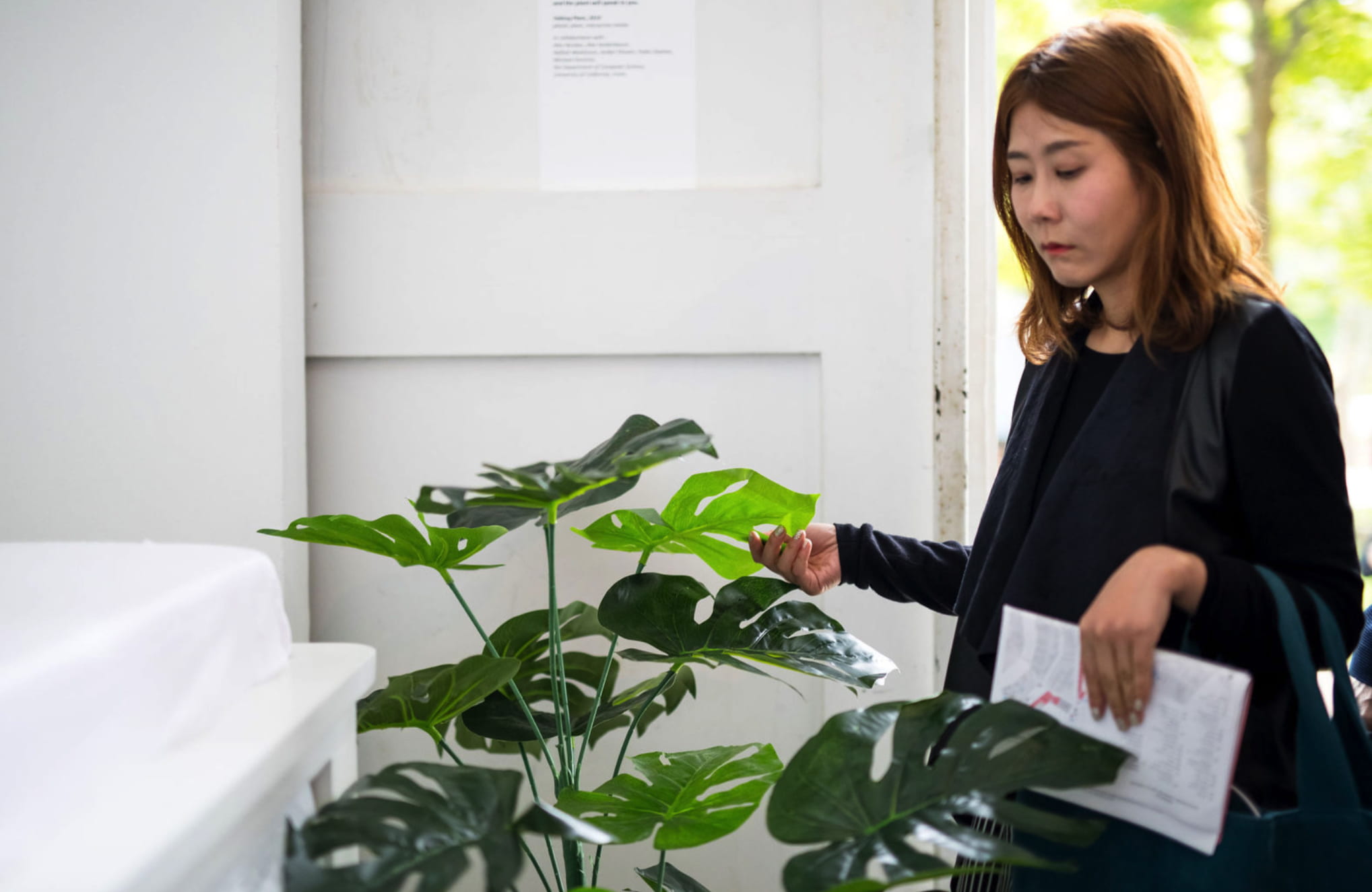Paintings that play with perception
New exhibition at UCI’s Institute and Museum of California Art pairs abstract and representational works

An abstract painting featuring concentric circles splashed across rows of fence-like vertical dashes. A plein-air painting depicting a tall, leafy tree reaching skyward alongside a curving country road.
Both are part of a new exhibition at UCI’s Institute and Museum of California Art called “The Resonant Surface: Movement, Image, and Sound in California Painting,” which opens Sept. 11 at IMCA’s interim location at 18881 Von Karman Ave. in Irvine. It’s free and open to the public and will run through Feb. 19, 2022.
The exhibition integrates works from IMCA’s Irvine Museum and Buck collections and features 24 paintings and two films from the early to mid-20th century. Abstract, nonobjective paintings and representational landscapes are displayed side by side, drawing links between disparate artistic styles.
Erin Stout, a curatorial and research associate at IMCA who curated “The Resonant Surface,” was inspired to organize the artworks as she was conducting research on IMCA’s permanent collection last year. She noticed that some artists, even those of different aesthetic approaches, were exploring movement and sound in similar fashions. Artworks that didn’t on the surface seem to relate to each other actually had deep connections.
“Many of the artists whose works are on display were actively thinking about how to visualize sound and music. They were engaging in merging tactile experience and music,” Stout says. “What was exciting for me was how these pairings could unfold in unexpected ways. These works are really in dialogue with one another.”
The exhibition is divided into four sections that each address a particular theme: correspondences, rhythm and abstraction, dynamism and flux, and visual music.
A 1957 painting by Gordon Onslow Ford called “Constellations and Grasses” – the one featuring concentric circles – is part of the dynamism and flux section. In this work, the micro and the macro collide on the large, horizontal canvas.
“It looks like outer space, but it also looks like ripples on a pond that are reverberating outward. The painting also has these sharp, rhythmic, staccato dashes,” Stout says. “It pulls you in but pushes you away at the same time.”
Other pieces in the dynamism and flux section evoke similar feelings, she adds: “They have this uncontainable energy that’s trying to burst beyond the frame into the viewer’s space.”
Works in the rhythm and abstraction section – including William Henry Clapp’s 1943 painting “Country Road,” which depicts a tree beside a road – are a combination of these modes of expression. Some are explicitly abstract. Others are representative of California impressionism or neo-impressionism.
What viewers perceive depends on their physical relationship to the piece. With “Country Road,” for instance, an observer can clearly see the landscape portrayed in the painting when standing at a distance. But up close, the landscape dissolves amid the brushstrokes.
“This form of viewing is very embodied,” Stout says.
The other two sections in the exhibition – correspondences and visual music – similarly trace the links between diverse artistic styles. Many of the artworks emulate the tonality of music by using color to convey mood and atmosphere, rather than literal or realistic subject matter.
“That’s the energy contained within a lot of these works. It changes constantly,” Stout says. “These are not works that are static, just as we are not static as people. We are all resonating against each other in different spaces and beyond those spaces. These paintings resonate beyond the spaces they occupy.”
It’s a concept she hopes viewers can appreciate.
“I want visitors to exit the gallery feeling a sense of interconnection,” Stout says. “These works appear to us as atomized objects, but the show demonstrates the ways these artists were using painting to connect with larger physical and spiritual phenomena.”
Exhibition attendees will be greeted by gallery guides who are all UCI students – part of a new service launched by Julie Delliquanti, visitor experience manager at IMCA. After a successful program in which students facilitated virtual school visits during the pandemic lockdowns, Delliquanti hired and is training the first cohort of gallery guides for the 2021-22 academic year.
“The visitors love talking with the students and learning more about them by asking questions: ‘What do you study? Why are you here? What has your UCI experience been?’” she says.
Delliquanti has sought to make the IMCA experience more dynamic in other ways. Suggestions by the public prompted longer labels on some of the artworks to provide greater context. A curated collection of books related to the exhibition is available on site for visitors to browse, and they can access a recommended reading list if they want to learn more.
“The longer that people linger, the more they’re rewarded. People usually spend only seven to 13 seconds before an artwork in a museum, and that’s the blink of an eye,” Delliquanti says. “The longer you spend with an artwork, the more you see and ask.”







